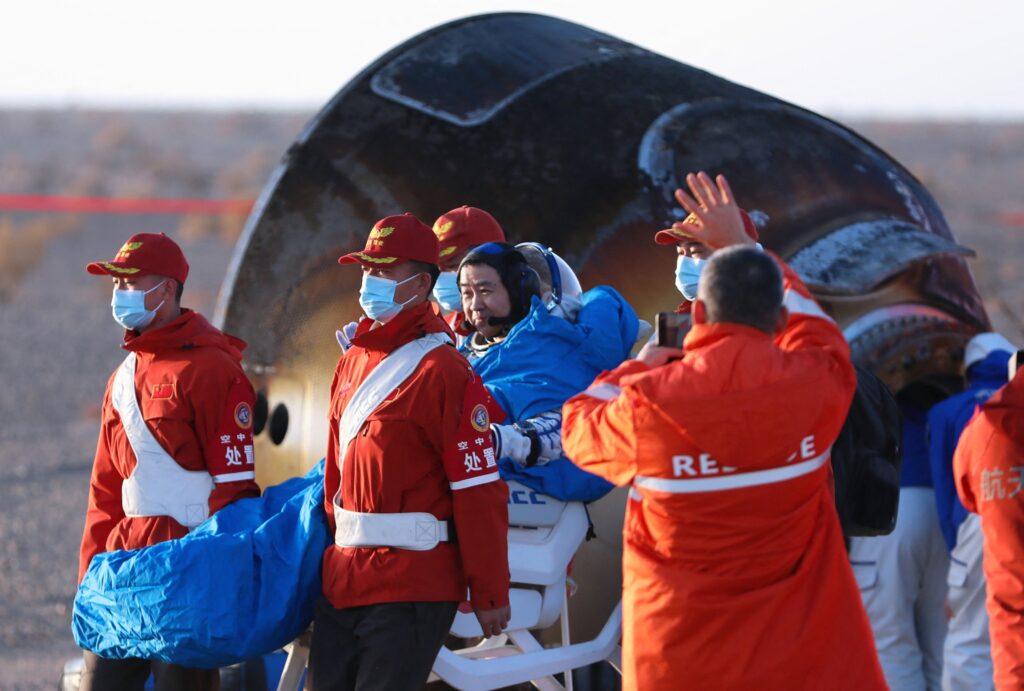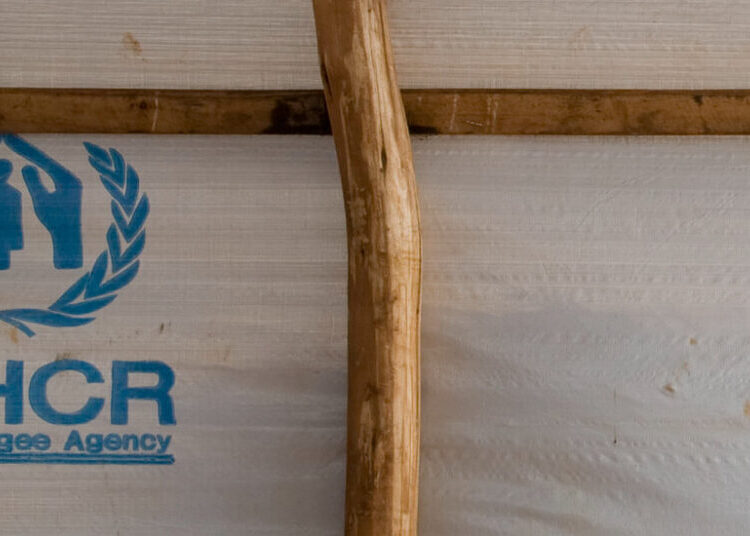Three Chinese astronauts were stuck aboard the Tiangong space station this month when their return craft sustained damaged. They eventually made it home on the vehicle that brought up their replacements — leaving the next trio of astronauts in the same predicament. They are far from alone: Russian and U.S. spacefarers have also been delayed in space in recent years, for months at a time.
Micrometeoroid strikes, technical malfunctions and poor weather have imperiled space travel from the start. But as space logistics become more complex, human-made space debris proliferates and weather becomes less predictable, such incidents are likely to increase, experts said.
Chinese astronauts who were set to return Nov. 5 had been in space since April. But the Shenzhou 20 spacecraft meant to carry them home was damaged in a suspected debris strike, according to the China Manned Space Agency.
An uncrewed Shenzhou 22 capsule arrived at the station Tuesday, launched late Monday on a short-notice mission to provide them a way back to Earth. The episode exemplified a safety-first approach and put the agency’s emergency response capabilities to the test, it said in a statement.
“We are on the cusp of a great increase in human spaceflight activities coming from a broad array of companies as well as governments, both in lower orbit and going out to the moon,” said Brian Weeden, systems director of civil and commercial policy for the Center for Space Policy and Strategy at the Aerospace Corporation. “With that, I think we will probably see more potential incidents.”
Scientists have long raised alarms about increasing amounts of space junk, including the risks it poses to astronauts and equipment. Human-generated debris, including defunct satellite remnants, crown earth’s orbits alongside naturally occurring micrometeoroids. More than 9,000 active satellites and tens of thousands of other objects are being tracked in orbit, said Weeden, posing potential collision risks.
“There’s also debris that’s so small we can’t track it,” said Grant Cates, a senior project leader for the Space Architecture Department at the Aerospace Corporation. “In this particular case [the Shenzhou incident], it probably might have been an untracked piece of debris that struck the spacecraft.”
In the 1970s, NASA scientist Donald J. Kessler theorized that a time would come when there would be so much space debris that collisions would cause a runaway chain reaction making key orbits unsafe.
Space was never free of natural debris, said Weeden, but we are moving closer to a situation in which human-generated space debris is the greater threat in orbit of Earth.
Technical problems with spacecraft intended to bring astronauts back are another cause for delays.
Last year, NASA astronauts Sunita Williams and Barry Wilmore intended to spend fewer than nine days on the International Space Station. But NASA deemed their Boeing Starliner spacecraft unsafe when several of the capsule’s thrusters didn’t fire properly during a test flight. The two-person crew eventually returned home in a SpaceX capsule. They were stuck on the ISS for close to nine months.
Making sure that a spacecraft can withstand the stress of getting into space and then getting back is a challenge, experts say. “It’s gotta go from zero to seven kilometers a second, that’s something like 29,000 miles per hour,” Weeden said. “And then decelerate back from that speed back down to zero to land.”
Since NASA shut down its space shuttle program in 2011, those vehicles have been provided by private companies.
Another reason people have been stuck in space: their country dissolved while they were in orbit.
Whether it is a state or commercially operated mission, all visits to space have to be authorized by a government, said Danielle Wood, an assistant professor of aeronautics and astronautics at MIT and director of Space Enabled, a research group. The Soviet Union was dissolved while Russian cosmonaut Sergei Krikalev was on board the Mir space station in 1991. Krikalev had launched from the Soviet Socialist Republic of Kazakhstan and was meant to be in space for 150 days, but had to stay from more than twice that because there were questions about who would finance his return to Earth and be responsible for his space activity.
Eventually Glavkosmos, the Russian space agency, began selling space rides to other countries to raise money to bring Krikalev home.
A number of astronauts have been stuck in space due to unfavorable weather at the landing site. Returning to Earth is a complicated task, and those leading the mission always want to ensure the weather is good for reentry and landing, and for the recovery vessels or ground forces.
“Sometimes the weather causes just a one- or two-day delay,” Cates said. “And sometimes it can actually be a couple weeks and that’s just the nature of the business.”
The space shuttle Atlantis, with a crew of seven astronauts, was set to land on May 23, 2009, when its return was called off. NASA attributed the one-day delay to “dynamic weather in the area around NASA’s Kennedy Space Center in Florida.”
In some cases, astronauts have been stuck in space out of caution. After the Columbia space shuttle exploded during reentry to the Earth’s atmosphere in 2003, killing all seven astronauts aboard, NASA suspended all space flights.
Two U.S. astronauts, Donald Pettit and Kenneth Bowersox, and one Russian cosmonaut, Nikolai Budarin, who were at the ISS at the time, spent a few extra months in space until a Russian spacecraft brought them home.
Scientists said that astronauts, however, rarely consider themselves “stuck” or “stranded” in space. Delays are built in, they say, and they cherish their time in orbit.
Weeks after Williams and Wilmore returned from space after their extended space tour, they gave a joint appearance on Fox News during which Wilmore said “in the big scheme of things, we weren’t stuck.”
Hours later, at a news conference in Houston, Wilmore said: “Because we’re in human spaceflight, we prepare for any number of contingencies. This is a curvy road. You never know where it’s going to go.”
The post Why do astronauts keep getting stuck in space? appeared first on Washington Post.




